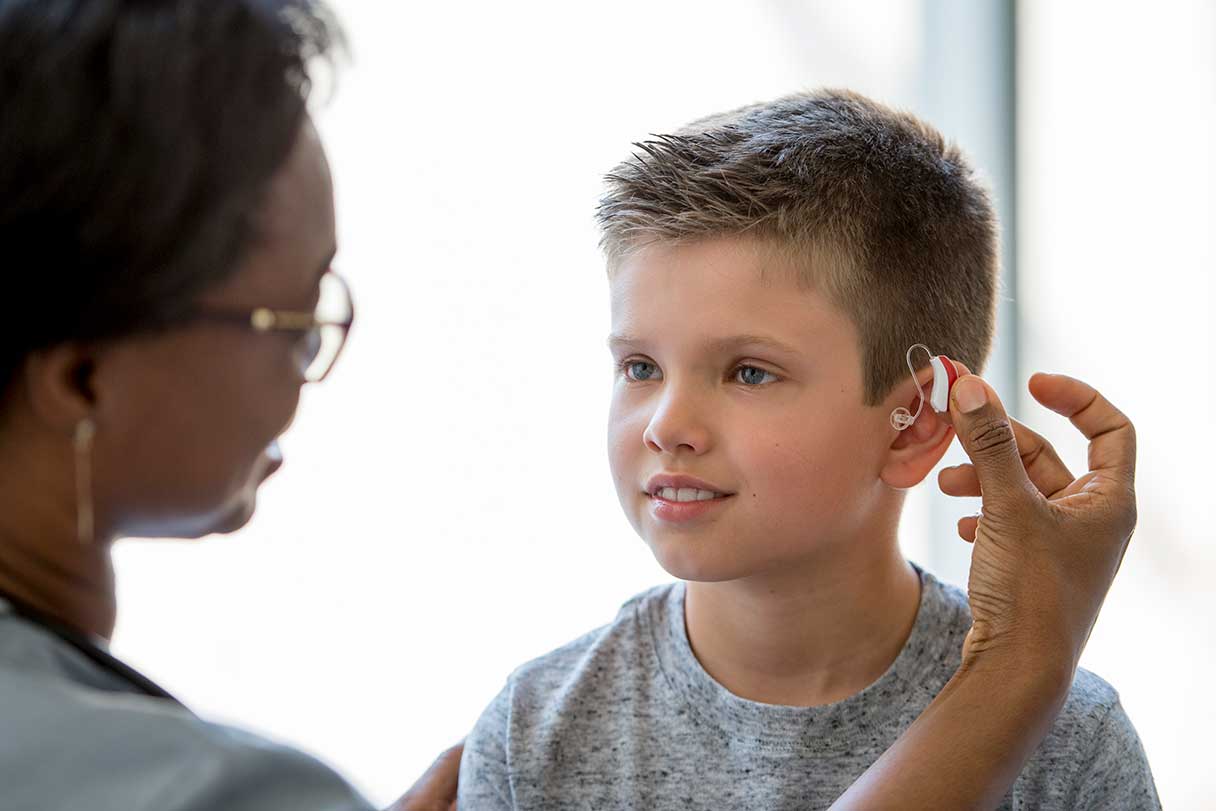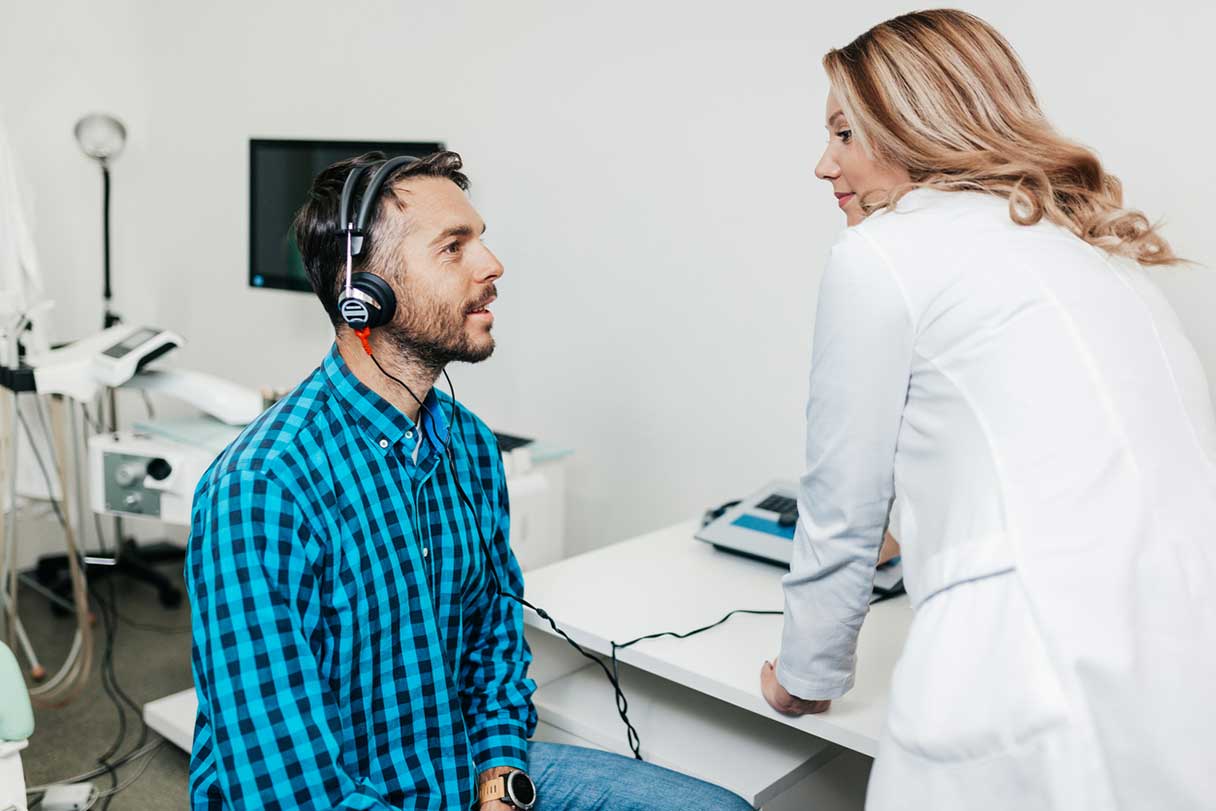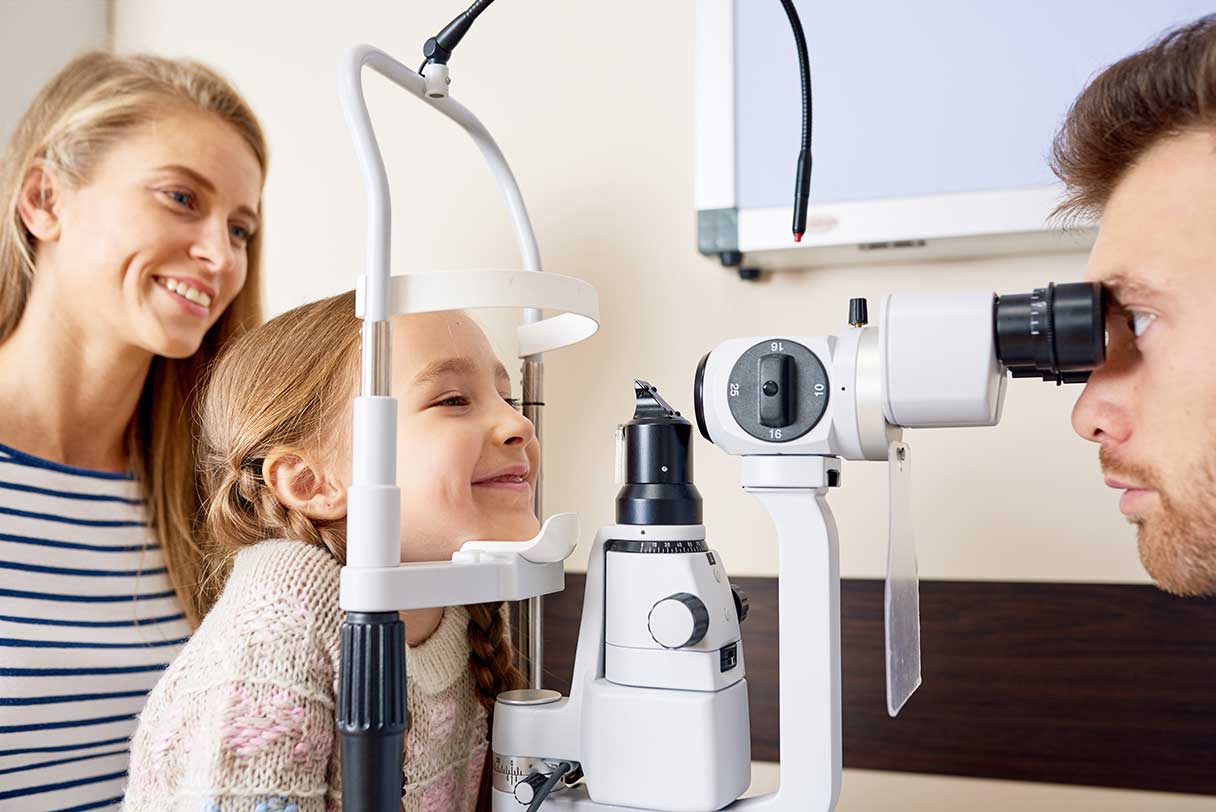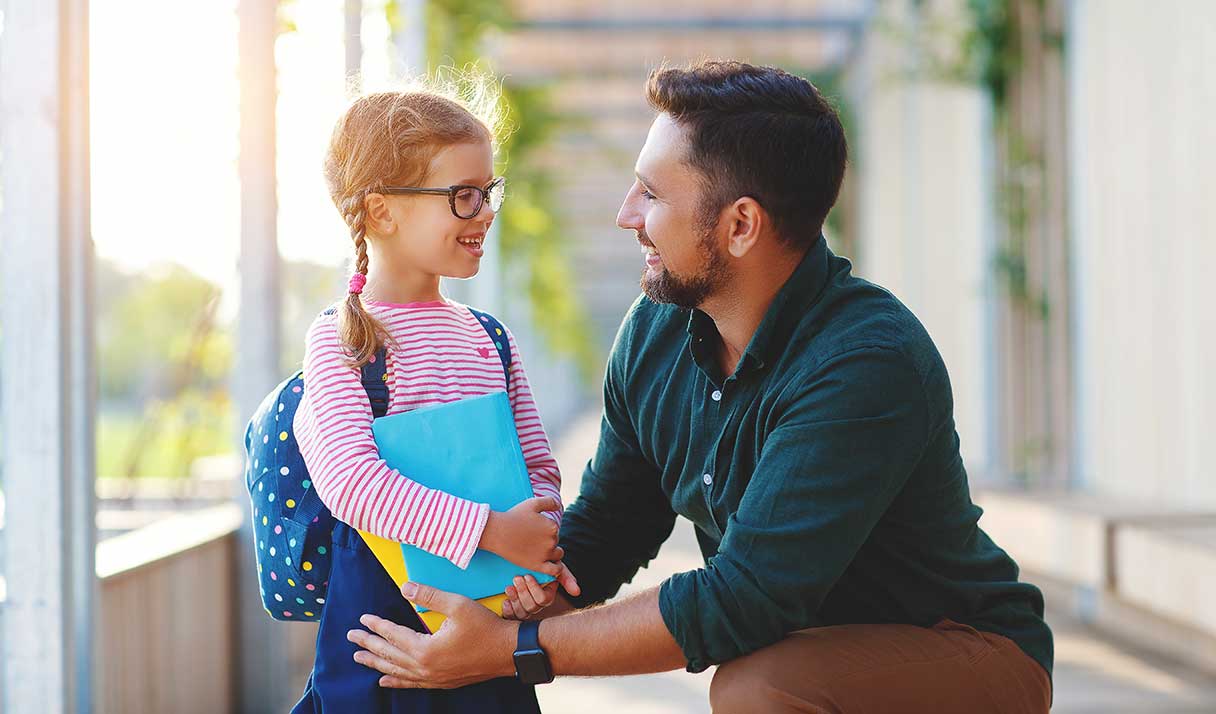In the United States, around 2 to 3 out of every 1,000 children are born with hearing loss.1 It is typically found during a routine newborn hearing screening before the infant leaves the hospital.2
Hearing aids can support a child with hearing loss at any age, playing a vital role in speech development, learning and social interaction. They help ensure that hearing loss does not become a barrier to success in the classroom or to overall quality of life.3
Hearing Loss Symptoms in Infants and Toddlers
While some parents find out their child has hearing loss during infancy, other children may not develop or be diagnosed with hearing loss until later.3
Hearing loss may present differently depending on the type of hearing loss and the age of the child. Common symptoms for infants and toddlers may include:3
- Delayed developmental milestones
- Does not react to voices or sounds
- Minimal babble or doesn't try to make new sounds
- Not startled by loud noises
Hearing Loss Symptoms in Young Children
Common symptoms for older children may include:3
- Delayed speech and/or language development
- Difficulty expressing themselves either orally or in writing
- Feeling exhausted at the end of the day
- Frequent requests for conversations to be repeated
- Frustration with trying to communicate with others
- Speech disorder
- Struggling socially at school or with academics and/or behavior
- Trouble following or understanding directions
Common Causes of Hearing Loss
There are three categories of hearing loss: sensorineural (affects the inner ear and auditory nerve), conductive (affects the outer or middle ear) or mixed hearing loss (a mixture of both sensorineural and conductive).3
Some children may be born with hearing loss, either because of genetics or due to complications during pregnancy. Other children may acquire hearing loss after birth.3
Common causes of acquired hearing loss in children can include:3
- Damage to the structure of the ear
- Ear infections
- Ear wax buildup
- Encephalitis (inflammation of the brain)
- Excessive noise exposure
- Foreign body gets stuck in the ear
- Head trauma
- Medications that can cause damage to the inner ear
- Meningitis (inflammation around the brain and spinal cord)
- Viral infections (such as measles, mumps, chicken pox)
How Hearing Aids Can Help Kids
If your child is showing any signs or symptoms of hearing loss or fails a hearing test, it is important to get them evaluated by an audiologist immediately. A delay in treatment can prolong speech and language issues, create learning barriers at school and make communication with adults and peers very difficult.4
Hearing aids work by amplifying sound vibrations entering the ear and converting them to signals that move along your auditory pathway and up to your brain, making them more audible to your child.5 A child may need a hearing aid in one or both ears.4
An audiologist can help you understand if your child will benefit from hearing aids, assist you with deciding what type is best and determine if they will need a hearing aid in one or both ears.4
Types of Hearing Aids for Children
There are three main styles of hearing aids: behind-the-ear (BTE), in-the-ear (ITE) and in-the-canal (ITC).5
The BTE hearing aid is most commonly used with children. This is primarily because:4
- It can be used for many types of hearing loss
- Earmolds are easy to handle and clean
- Earmolds are soft, safe and comfortable for children
- Earmolds can easily be replaced as the child grows
Average Cost of Hearing Aids for Children
The average cost of hearing aids ranges between $1,000 and $4,000.6 The cost may depend on your location, the model of hearing aid you purchase and the technology level and features included.
In addition to the cost of the hearing aids themselves, typical costs may also include:6
- A professional fitting
- Batteries for the hearing aid's lifespan (sometimes)
- Follow-up treatments
- Maintenance
- Troubleshooting
Costs of different types of hearing aids
The type of hearing aid you purchase will factor into how much you need to spend; however, the national average cost* of digital hearing aids per pair is $2,114 and can range from $1,650 to $4,155.7
The breakdown of average cost* by hearing aid type is in the table below:7
| Hearing aid type | Average cost |
|---|---|
| Behind-the-ear (BTE), per device | $1,562 |
| Completely-in-the-canal (CIC) or mini hearing aid, per device | $1,917 |
| In-the-canal (ITC), per device | $1,818 |
| In-the-ear (ITE), per device | $1,411 |
| Open-fit mini BTE, per device | $1,513 |
| Receiver-in-the-ear (RITE), per device | $1,966 |
Additional hearing aid costs
When purchasing hearing aids, additional costs may arise, as needed. These may include:7
| Additional items | Average cost |
|---|---|
| Custom earmold (for BTE aids) | $151 |
| Hearing aid adjustment to fine-tune settings | $76 |
| Protective earplugs (pack of 10) | $5 |
| Protective earplugs (pack of 500) | $76 |
Insurance Coverage
Getting insurance to cover hearing aids can be tricky for adults. But because of federal initiatives such as the Early Hearing Detection and Intervention (EHDI) program, it may be easier to get financial assistance for children’s hearing aids.8
Options available for financial assistance are highlighted below.
Medicaid
Children’s hearing aids are covered by Medicaid in every U.S. state.9 Talk to your pediatrician or hearing specialist about getting help with signing up for qualifying insurance.
Private insurance
If you have health insurance through your employer or the Affordable Care Act, check your policy to see if any coverage is provided for hearing aids and subsequent care.9
Children’s Health Insurance Program (CHIP)
If your child is in a low-income family but does not qualify for Medicaid, check out the CHIP program. It may be able to help supplement the cost.9
How Kids' Hearing Aids Get Fitted
Before your child can wear them, hearing aids need to be fitted to make sure they work properly and are comfortable.
The steps for fitting a child with hearing aids include:10
- Impressions of the ear canal are made with a cotton foam to create a customized earmold.
- The earmolds are ordered and come in a variety of different colors to choose from.
- The audiologist makes sure the mold fits and programs the hearing aids specifically to the child’s needs.
- The audiologist will run some tests to make sure they are working properly.
- The audiologist will teach parents how to clean and care for the hearing aids.
- Intermittent follow-up appointments will be scheduled to check the function and fit of the hearing aids.
Next Steps if You Suspect Hearing Loss
The bottom line is that if you spot signs and symptoms of hearing loss in your child, it is important to have them evaluated right away.
Hearing aids are the main tool to help children amplify their hearing. They may minimize speech and language delays and improve communication with those around them.
Frequently Asked Questions
Here are some commonly asked questions and answers about hearing aids for children.
Financing Ear Care With the CareCredit Credit Card
The CareCredit credit card can help you pay for hearing care, including regular hearing tests, screenings and more.** Use our Acceptance Locator to find a hearing specialist near you that accepts CareCredit. Continue to invest in your wellness journey by downloading the CareCredit Mobile App to manage your account, find a provider on the go and easily access the Well U blog for more great articles, podcasts and videos.
In addition to hearing care, you can also use your CareCredit credit card for dentistry, cosmetic, pet care, vision, health systems, dermatology, pharmacy purchases, spa treatments and so much more within the CareCredit network. How will you invest in your health and wellness next?
Author Bio
Amy Isler, M.S.N., R.N., has more than a decade of nursing expertise. She combines her nursing experience and journalism background to create engaging and educational healthcare content for leading brands and publications, including GoodRx, Verywell Health, Vision Center and more. Her mission in writing is to provide positive, accurate and informative articles for consumers.







